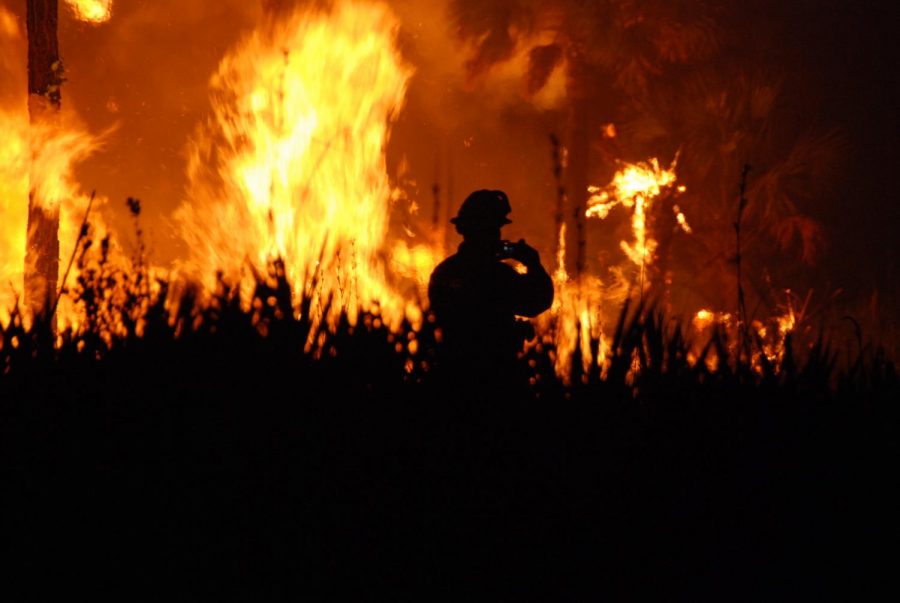Pinnacle, Slate Fires add to list of active Arizona wildfires
Telegraph, Mescal Fires continue to burn near Globe
Josh O’Connor – USFWS (Flickr)
Rugged terrain, high temps and low nighttime humidity are making firefighting efforts difficult in Arizona
June 16, 2021
It smelled like smoke, more specifically burned creosote, in Scottsdale, Ariz. on Tuesday.
The accumulation of smoke from several active wildfires in the state has cast a hazy pall and made for ominous looking sunsets across most of the Phoenix metro area.
According to InciWeb, the largest of the active fires is still the Telegraph Fire. Currently over 146,000 acres, the wildfire has been burning since June 4. Just over 1,000 personnel have the fire 59% contained and crews are expecting full containment by June 30.
The Mescal Fire is literally right next to the Telegraph Fire. It is 90% contained at 72,250 acres. The interactive InciWeb map, shows the eastern side of the Telegraph Fire has burned all the way up to the western edge of the Mescal Fire.
The Pinnacle Fire started June 10, less than 20 miles south of the community of Bylas, almost due west of the town of Safford. 264 personnel are fighting the roughly 13,000 acre fire actively burning in cured grass and brush. Crews are predicting that weather conditions and topography could result in increased rates of spread.
A Coconino County Sherriff’s officer reported the Slate Fire, 23 miles N.W. of Flagstaff, early the morning on June 7. By Tuesday night, the fire had grown to over 11,000 acres and was 33% contained. Parts of the Coconino National Forest have been closed due to fire danger.
A bevy of smaller fires have been brought under control south of Tucson and north of the border with Mexico.
Two more fires are burning closer to the New Mexico border.
The McDonald Tank Fire south of Tonto Lake has burned 3,550 acres but is 95% contained. The nearby Boggy Creek Fire seems more problematic. The blaze started 10 miles NW of Hannigan Meadows in the Wallow Fire scar on May 23. The fire is burning in an area of rugged terrain with few access points. As of May 30, the fire had burned nearly 3,000 acres and crews had 70% containment.
Extremely high daytime temps, dry conditions and a lack of nighttime humidity have all combined to make fire suppression extremely difficult.


